By:
Edward Farlington I first saw Prince Philip in ‘real life’ in 1970, during Cowes Week, when my family watched him coming ashore from the Britannia in the royal barge to fly up to London for the Queen Mother’s seventieth birthday celebrations. It seems almost incredible that, forty-two years on, he has, only days ago, been out on the water again in that very same craft. As I write, he is ensconced in the King Edward VII hospital recovering from an infection, but the most recent memory for all of us is of him marking time to the Sailors’ Hornpipe, wearing the full day-dress uniform of an Admiral of the Fleet.
Prince Philip was born on 10th June 1921, on the isle of Corfu, son of Prince Andrew of Greece and Denmark and Princess Alice of Battenberg. However, shortly after the Greco-Turkish War (1919-22) his family was exiled and he was initially taken to live in a house in Saint-Cloud, on the outskirts of Paris. Eventually, he moved to England to live with his maternal grandmother, widow of Admiral Prince Louis of Battenberg (who, during WW1, had changed his name to Mountbatten). He was educated at an American school in Paris, Cheam Preparatory School in Berkshire, Schule Schloss Salem (founded by Kurt Hahn) for a short time in 1933 before Kurt Hahn established Gordonstoun School near Elgin in Scotland, to which Prince Philip transferred. Tragedy struck the family with undue frequency in the 1930s – Prince Philip’s mother was consigned to an asylum with schizophrenia; his father went to live in Monaco, so Philip effectively became an orphan. His sister Cecilie, her husband the Grand Duke of Hesse and their children were killed in an air crash in 1937; his uncle, George, Marquis of Milford Haven, (brother of Lord Louis Mountbatten) died in 1938 of cancer. However, with Lord Louis being his guardian, Prince Philip’s choice of career was not a surprise.
For, from that time, things improved, and in 1939, aged 18, Prince Philip joined the Royal Navy and in that year first developed a bond with Princess Elizabeth, who he escorted around the Britannia Royal Naval College during a visit by the King. Soon after this encounter, he and Elizabeth started a correspondence that was to continue throughout the dark days of the war and culminate in their marriage in 1947, when the princess was just 21. Prince Philip, always a lively individual (described as ‘boisterous, but always polite’ by the head of his school in Paris), and a natural sportsman, was to make an ideal naval officer; he passed out of Dartmouth as top cadet in 1940 and served with distinction throughout the war, earning a Mention in Dispatches for his handling of the searchlights during the Battle of Cape Matapan whilst still a midshipman, aboard the battleship HMS Valiant. He achieved top grades in his promotion courses, soon becoming a sub-lieutenant and then lieutenant. When appointed 1st Lieutenant of the destroyer HMS Wallace in 1942, aged 21, he was one of the youngest seconds-in-command in the navy. In 1944 he was transferred to the destroyer HMS Whelp in the British Pacific Fleet, which was moored in Tokyo Bay at the surrender of Japan in 1945.
Prince Philip continued to serve in the Royal Navy after the war, and in 1950 was promoted lieutenant-commander and, shortly before the Accession of Her Majesty the Queen, to commander. He also continued and indeed expanded his sporting interests, becoming a keen polo player, sailor, and (according to my late father) not a bad cricketer (indeed, my father recalled him playing on the beautiful ground at Arundel Castle with the Duke of Norfolk’s XI). The Accession of the Queen inevitably put paid to Prince Philip’s very promising career in the navy, but the commissioning in the mid-fifties of the new Royal Yacht, Britannia, enabled him to keep in close contact with matters nautical, and, indeed, he circled the globe in her, opening the 1956 Olympic Games in Melbourne and visiting Antarctica. He also developed a keen interest in sailing, resulting in the acquisition of the racing yacht Bloodhound built by Camper & Nicholson’s and of 1936 vintage, in 1962. He entered races frequently in the sixties and seventies during Cowes Week, and passed on his enthusiasm to his children, particularly Prince Charles and Princess Anne, who were with him on the day I saw him in 1970. I remember also his sailing instructor and friend, Uffa Fox, who was famously recorded giving a very ‘Hampshire’ rendering of ‘A Life on the Ocean Wave’.
Riding has always been a passion of the Royal Family, and Prince Philip is no exception. Lord Mountbatten introduced him to polo in the 1940s, and he soon became an accomplished and serious player, his team Windsor Park winning the British Open tournament at Cowdray Park in 1957 and 1966. He continued to play until 1971, by which time Prince Charles had also become an accomplished player and a member of the team. Though he has continued to take an interest in the sport right up to the present day, injury to his wrist meant that after 1971 his equestrian interests, as an active participant, took a different path, and in 1973 he took up competitive carriage driving, and, although he gave up carriage racing as such a few years ago, even last Sunday he was out carriage driving at Windsor in the morning.
Prince Philip is as one would expect a naval officer to be – straightforward, commanding and with antennae for hogwash, which means he is not very tolerant of banality, stupidity or sentimentality. His waspish sense of humour is, of course, world-renowned, his so-called ‘gaffes’ in the annals of royal folklore – only, of course, they were not gaffes at all, but rather good quips and wind-up lines. I like the one he reputedly said to the President of Nigeria: he remarked to the president, who was in full flowing robes, “You look as if you’re ready for bed.” He rarely remarks on political matters, but when he does, he is invariably right. Spot on on the subject of wind-farms, for example, which really are expensive white elephants, and on the late and very much lamented Royal Yacht Britannia, which, as he said, could have continued in service for years, but was axed for purely political reasons.
Prince Philip has always been a popular ladies’ man – certainly, ladies I know who know him think he is attractive, and even today he has not lost his ability to charm. So it is not at all surprising that Princess Elizabeth, when aged thirteen in 1939, thought he was wonderful, In spite of some difficulties, soon resolved, particularly over the matter of the family surname in the 1950s, ever since Prince Philip promised to be the Queen’s ‘liege-man of life and limb’ at the Coronation in 1953, he has been an unstinting and utterly supportive Consort – in fact, the longest-lived male Consort in British history. The Queen has referred to him as a rock she can lean upon, her ever-constant support, and he was indeed very conspicuous by his absence during the third and fourth days of the Jubilee weekend, especially when the Service of Thanksgiving took place.
Because Prince Philip has, in effect, always been around, there has been a tendency to take him for granted, and sometimes the more po-faced, or shall we say, self-righteous, elements of the media have castigated him for remarks which were only ever intended in jest. I think the people of this country have overtaken the media in accepting, and, indeed, admiring Prince Philip’s non-conformity to political correctness, and when, at the weekend, the huge crowd attending the Diamond Jubilee Concert were informed of his consignment to hospital, it was a measure of genuine affection for him that, not only was he cheered to the skies, but the people spontaneously chanted ‘Phi-lip, Phi-lip’.
He is very understated about his achievements, which are many. Apart from his illustrious war service, he founded the Duke of Edinburgh’s Award Scheme with Kurt Hahn back in the fifties, which has helped and challenged many thousands of young people, he has been instrumental in the gradual ‘modernisation’ of the monarchy, is patron of many charities and other organisations, Chancellor of Cambridge University from 1976 to 2011, Colonel in Chief or Royal Colonel of many regiments, Captain-General of the Royal Marines, and most recently, Lord High Admiral. He has also been a very active patron of the World Wildlife Fund, founded in 1961. And, still, he carries out a remarkable schedule of engagements.
It remains for us to wish him both a speedy recovery, and a very Happy Birthday.
Today is the tenth anniversary of Her Majesty's passing.
Written in honour of Her Majesty, the Queen's 60th anniversary of Her accession - ,6 February 2012.
By:
Thomas J. M. Mace-DeLacroix Mills
Secretary General, British Monarchist League
Long ago are the days of old, when débutantes were presented to the palace, social graces and manners were common place, deference towards the crown was high and the masses understood the saying “for Crown and country”. Much like society has drastically changed over the last 60 years, so has the life of an innocent little girl turned Queen, by the decision of one man who chose his feelings over his duty. As time has passed and many gone that remember the abdication crisis of 1936, it was this singular event in our history that has shaped the woman we know today as our Queen. Though born a Princess on 21, April 1926, Elizabeth's early years were as normal as could be. Being born royal of course would provide a comfortable life, but being born to the brother of the heir to the throne, would leave elizabeth out of the formal expectations and pressures that would accompany and be expected of those born directly to the heir apparent.
The formal duties and functions of State would not be of worry or even thought about by a person born into Elizabeth's position within her family. The first of her generation to be born (Granddaughter to King George V and niece to the heir to the throne), Elizabeth was not just a famous baby, but third in line to the throne at this time, as her Uncle David (The Prince of Wales) had not yet married or produced heirs of his own. As the years went by and little Elizabeth advanced in age, she enjoyed the comforts of a safe and secure family life, shielded from the public trappings and confines of a demanding public life. The odd sitting for a portrait or photograph popped up every now and again, but that was no different in those days as taking family photos are to us today. She continued to be known as the worlds most famous child as she grew, as still her Uncle had not married and no other children (besides Princess Margaret in 1930) of her generation were to be born to any other members of the immediate Royal family.
Just a girl in 1936 when her Grandfather King George V died, it must have been difficult for a little ten year old to fully comprehend the decision that her uncle (King Edward VIII) made only a few short months later to abdicate his throne, which would ultimately and dramatically change her life as she was to know it. Moving from a modest London town-house and into the large rooms of Buckingham Palace would be overwhelming for any child, but the chaos she was thrust into was not to end, but to grow into a way of life that would define her character for her entire life to come. Losing more than just her childhood home, it was her family that would suffer the greatest change and eventual loss in the coming years. Though a favourite of her Grandparents King George V and Queen Mary, little elizabeth (known as lillibet to her family) was not exposed to the greater extent of Royal life, as her own small family was mostly removed from the high demand and public profile associated with royal duties. Elizabeth's father (Prince Albert, or Bertie to his family) suffered from a stammer, and it was her mother's reluctance to a royal life that contributed to the refusal of Prince Albert’s advances and several marriage proposals.
Knowing what would be expected of her in a “Royal” marriage and life, Elizabeth Bowes-Lyon denied acceptance of the man she loved, however it was that same love that eventually saw the Duke's advances accepted, in which his last proposal succeeded. Elizabeth was comforted by the fact that the Duke's difficulties with public speaking kept him from a great expanse of public duty, and also knowing that his brother would become king, put her mind at ease knowing she would not have to endure the public spectacle of a demanding and expected life. Elizabeth was of Scottish aristocracy, however she was not royal. This did not prove an issue as she was the first non Royal to be accepted and eventually marry into the immediate Royal family. After their wedding the Duke and his new Duchess of York welcomed their first daughter Elizabeth, followed by another beautiful girl named Margaret four years later. The York Household enjoyed a happy time of low profile “royal” life within their small family, which was simply referred to as “us four” by Prince Albert, Duke of York. When duties were asked of the York's, it was often times the Duchess whom often had to step into the role on behalf of her husband, due to increased difficulties with his stammer that made the duties of public life for him both stressful and difficult. Though there were no major expectations from senior members of the Royal family or highly important public duties expected of the York family (with an exception now and again),it was little Elizabeth's uncle (and not her father) who was directly, and next in line to the throne.
It was not until the passing of little Elizabeth's Grandfather (King George V) that things started to become more turbulent within the royal family itself, which would start to invade the confines of the safety and comfort of the York way of life. As Elizabeth's Uncle dangerously played with the monarchy's future and the love of a nation, it became increasingly apparent that the King cared little for his position, as he exerted little time or interest to what was expected of him. He did not take his new role seriously as he did not want to be King, though his destiny was to see him as such. Adamantly choosing private desire over public duty, Edward VIII instigated a rift within his family which would take decades to resolve, and an eternity to forgive. He was not seen as fit to reign, something that his father King George V knew. The King often discussed the irresponsible actions of his son David, which proved to him and the family, that the Prince of Wales was not fit for the heavy burden and duty associated with a stringent life as King, which was about to be proven to the world. With the abdication crisis unfolding, along with growing tensions on the continent, Queen Mary, the York family, and Palace courtiers saw the newly ascended King Edward VIII, frolic in a dangerous liaison with a twice divorced American woman, Mrs. Wallis Simpson. Foregoing his duty in favour of personal luxuries and comforts, along with his scandalous affair, the King set out to make Mrs. Simpson his wife, which was highly controversial and frowned upon by the establishment. It was simply unprecedented. This was not something that the nation would take to, nor would it be allowed in the eyes of the Church, in which he was “Defender of the Faith”. Knowing Mrs. Simpson had now filed for divorce, an ultimatum was presented to the King, in which he chose to relinquish his duties and abdicate his throne to be with the woman he loved.
Once the instrument of abdication was signed and witnessed, it was Albert, the reluctant Duke of York who would now be styled, His Majesty King George VI. The pressures of being King and the duties of sovereign were now to fall upon the Duke of York, who was always in a delicate state of health from his time as a child. Never meant to be king, nor wanting to see himself or his family in this Royal role, King George VI knew that his life and that of his little daughters now belonged to the British people. As the former King (who was now addressed as the Duke of Windsor) went into a life of banishment from the royal court and family, so too went the care and worry free life of the little Princess Elizabeth. Days of playing with her sister, being read stories by her father and enjoying a worry free childhood, would soon be far and few in between as a new life of being groomed as the heir to the throne would take precedence. Issues of State would soon come to take over her home and her life, as she would grow into the duty she has come to display today.
Her father was no longer solely hers, her sister's or her mother's, as not only he, but her entire family now belonged to not just the nation, but the Commonwealth too where duty trumped all else. The destiny that had been her father's would soon be realised by Princess Elizabeth, as special concessions would be made which would help keep Elizabeth closed off from a world outside of the Palace walls. Finding herself in a position very different from what she was used to, it was the abdication crisis which taught her the lessons of duty, honour and service which would ultimately become her trademark. Elizabeth would soon come to find that the destiny of her father would one day be hers too, as it would also be that of her own family and children in the years to come. Now King to his people at home and around the world, Elizabeth realised that her days of a quiet family upbringing were over, as the duties of State consumed her father the King and mother the Queen, which thrust her and her sister into the bright and very demanding public lime light. With the renouncement of duty, the discarding of the throne and a short stroke of a pen, King Edward VIII dramatically altered little Elizabeth's life by changing it a drastic 180 degrees. From a little girl at play forced into the direct responsibilities of State, Elizabeth and her sister were now two of the most famous girls in the world, where the public would always be watching.
The Coronation of King George VI and Queen Elizabeth was attended by the Princesses Elizabeth and Margaret, which would prove a great experience for her own Coronation. She was being exposed in full to the meaning and way of Royal life, duty and protocol, something far removed from her previous Mayfair existence. However, the growing pressures of Royal life would eventually take its toll on her father the King. As the king grew in popularity as his reign advanced, the unity of “us four” did not waver. Still wanting to retain as much normalcy as possible for his little girls, the Palace went through great lengths to keep the little Princesses safe and protected, whilst offering them a very minimal taste of the opportunities of childhood outside of the palace. Trying to capture as much of a normal life as possible, Elizabeth and her sister joined the girl guides in which a troop was set up at Buckingham Palace for the little princesses to belong to. There were not a lot of children to play with at the Palace, therefore children and other girl guides from outside the palace were brought in to mingle with the princesses.
Continuing to improve his stammer, the King seemingly took to the task of his duty as Monarch. He was able to reach out to his people through speech, in which his actions as leader of the nation would say more than his words ever could. As if life had not changed enough for little Elizabeth and her family, the dark clouds of war would soon start to expand from the continent as Nazi Germany would soon threaten our shores. During these uncertain years, it was a brief encounter in 1939 at Dartmouth Naval College which would see Elizabeth grow into her own as a young lady, as she became royally smitten with a young naval cadet by the name of Prince Philip of Greece, who adopted the last name of his uncle Mountbatten when he became a naturalised British subject. However the simple innocence of young love was to be overshadowed as the situation in Europe intensified. War was now inevitable , and so started the preparations for battle. London's children were sent to the safety of the country, which also included Princess Elizabeth and her sister Princess Margaret, whom were evacuated to the safety of Windsor Castle (which was simply referred to as a “house in the country”). Their parents, the King and Queen remained in residence at Buckingham Palace as a show of solidarity with their people.
As London was heavily bombed, Buckingham Palace itself was bombed no less than seven times, in which Nazi bombs destroyed the Palace Chapel in 1940. Another bomb was dropped in the quadrangle whilst the King and Queen were in residence. Narrowly escaping, Their Majesties emerged from the broken Palace to shattered Glass from blown in windows and debris from the bombs explosions. As the King and Queen were filmed surveying the damage of their home, Her Majesty made a statement that was to become one of her most famous: “I am glad we have been bombed. Now I can look the East End in the face”. Now that the Palace had endured such bombing as the other parts of London had during the war, Their Majesties were able to truly relate to and feel the pain of their subjects. Truly revered by the people for staying at the Palace and not abandoning the city of London for the safety of a secluded country estate, The King and Queen were seen to be sharing in the peoples hardship and pain as reported by The Sunday Graphic on 18, September 1939 (Page 1): “By the Editor: The King and Queen have endured the ordeal which has come to their subjects. For the second time a German bomber has tried to bring death and destruction to the home of Their Majesties...When this war is over the common danger which King George and Queen Elizabeth have shared with their people will be a cherished memory and an inspiration through the years.” Being amongst the masses and sharing in their grief, endeared the King and Queen to their people. The Princesses spent much of the War at Windsor, however they were still shown in their State capacity as making war time speeches to the children of the nation, and upon Princess Elizabeth's 16th Birthday she was inspecting her own regiment of Grenadier Guards in which she was Colonel.
In support of the war effort, it was Princess Elizabeth who was to set an example by joining the war effort by training as a mechanic in the ATS. Here, she learned to drive and maintain various types of motor vehicles, including those used for war. The Princess was often found working in overalls on the engines of Red Cross motor cars, such as when her father the King came to visit her and observe whilst she was performing her duties. It was a few more years of uncertainty before Prime Minister Winston Churchill proclaimed and end to the war. It was on this day that he joined the King and the Royal family on the balcony of Buckingham Palace to the delight and cheers of the crowds that had gathered to celebrate the victory over Nazi Germany. As the celebrations of the day carried through into the night, the two little Princesses in disguise escaped the palace to join the throngs of people, so they could for once in their lives enjoy a few hours of being a normal everyday person. Though the war had come to an end and Britain could start rebuilding, it was six years of war stress and pressure that took its toll on the fragile health of our King. Such effects on His Majesty’s mind and body left him significantly weaker, but his belief in duty to his nation along with his strong will continued to see his reign successful.
After the war Prince Philip of Greece and Princess Elizabeth were seen together more frequently in society. Little was it known that during her time at Windsor Castle, the Princess had kept a photograph of Prince Philip with her. As they communicated, their liaisons became more and more frequent and a royal love affair blossomed. 1947 saw the first Royal tour taken with the entire Royal family, in which the Princesses were off to enjoy the sights and experiences of South Africa. Official duties were the priority of the King and Queen, but for Princess Elizabeth this tour would also mark her 21st Birthday in which she made one of her most famous speeches to the commonwealth of nations. Taking time out from touring and safari, Princess Elizabeth took to the airwaves proclaiming: “I declare before you all that my whole life whether it be long or short shall be devoted to your service and the service of our great imperial family to which we all belong. But I shall not have strength to carry out this resolution alone unless you join in it with me, as I now invite you to do: I know that your support will be unfailingly given. God help me to make good my vow, and God bless all of you who are willing to share in it”.
Now bound by duty for her entire life, the Princess was acting on the lessons in which she had witnessed and was taught from childhood: duty first, self second. As Britain and the Commonwealth revelled in the Princesses Birthday speech, her homecoming would be made even happier as the announcement of her wedding engagement to Prince Philip was announced. It was later in the year that the 20th of November 1947 saw the largest and most popular celebrations in Britain for decades. This union and this Royal Wedding was what the nation needed. It was a light emerging from the darkness of a war ravaged Britain, in which years of gloom and despair seemed to disappear as Princess Elizabeth and her new husband were the symbols of renewed hope, prosperity and continuity. They were described as a perfect couple in the eyes of the British media and their adoring public. After her wedding Princess Elizabeth happily agreed to take on more official duties to help lighten the load on her father's diary. As the King continued to become more feeble and his work load dispersed more heavily in his heir's direction, his failing health was masked and kept from the public. Knowing that his daughter needed time with her new husband, the King offered Prince Philip a Naval command in Malta where Princess Elizabeth would join him not as heir to the throne, but as a simple navy wife. It was in 1948 that the Princess gave birth to her first child, Prince Charles, and so began the happy days of the young family. However the family life that Princess Elizabeth was starting would not be what she herself had as a baby. The Princess was heir to the throne in which she herself would have to protect and shield her family from the glare of the media and the public. There was no way around the duty to which she was bound, therefore it was her children whom would often play second fiddle to the demands of State. Prince Philip began to reduce his role in the navy to take on more public duties with his wife on the King's behalf. He was very adamant about helping others, and it was obvious that he could relate to people of all stations and make them comfortable in his presence. The royal couple were often away from home on official duty and so it was to be again with an official visit to Canada in 1949 before Princess Anne was born in 1950. As the royal couple now had two children, less time was actually allotted to be at home with them as the duties of State increased.
1952 saw a planned overseas Commonwealth tour for the King and Queen, in which the Royal diary saw a most gruelling schedule. It was due to the fragile health of the King that Princess Elizabeth and Prince Philip agreed to embark on this tour to represent their majesties abroad. As the departure day arrived, King George VI, Queen Elizabeth and Princess Margaret saw Princess Elizabeth and her husband off from the tarmac at Heathrow. This was not just a farewell until the Princess' return, it was to be a final goodbye from a father to his daughter. The King sent a Princess of the realm to represent him to the people of the Commonwealth, knowing that she would return a Queen. Whilst on her tour in Kenya, on 6 February 1952, the Princess received the heart wrenching news that His Majesty the King had died peacefully in his sleep, in which she would immediately return home as Queen to her people. It was here in Kenya that she decided to be addressed by her own name, thus styled Queen Elizabeth II. Upon her return to London, Winston Churchill along with several Privy Councillors met the new Queen at Heathrow, where she famously exclaimed at the sight of them “Oh, they have sent the hearses”. As there was no time for her to grieve on her own as the daughter of a loved father, the new Queen's first official duty was to lead her great nation in mourning for her father the late King George VI at his funeral. King George VI was greatly admired, loved and endeared to his people for his bravery and steadfast war time attitude. His funeral was attended by his brother the Duke of Windsor, but not his sister in law the Duchess as she was not welcome. The Duke was never forgiven by Her Majesty the Queen Mother, as it was seen that the abdication which thrust the Duke of York to the forefront of duty as the reluctant King George VI, had indeed cost him his life in which he was taken much to early from her, his family and now his people.
Queen Elizabeth II watched the job her father never wanted send him to an untimely death, but it was his spirit and sense of duty that was impressed on the young and dutiful Queen. The event of the King's passing had a profound affect upon the new Queen and her family, as Prince Philip left his aspiring and successful naval career, to work along side his wife the Queen as her support and consort. The summer of 1953 saw a coronation of unparalleled excitement and celebration come over London, as the glamour and youth of our new queen was attractive to the nation, where London itself was again young, lively and full of hope. The death of Queen Mary in the start of the year, signified the passing of the old guard, in which a new age and style of monarchy would emerge to truly reflect Britain. Change was occurring and renewed hope was already high in spirit as the Queen agreed for television cameras to be granted access to the Coronation ceremony, which would allow millions of her new subjects to bare witness to her crowning. This was a clean break from what the old guard would have decided, which was to keep the television cameras out of the ceremony altogether. The ceremony itself was of tremendous pomp, glamour and spectacle, which saw Prince Philip brought to pledge his allegiance to his wife as his God anointed Queen as her liege man of life and limb. The coronation of such a young, energetic and lively Queen was a changing moment in our history, which ensured that change was welcomed and was going to happen within this new Elizabethan era. In the months to come, Her Majesty along with Prince Philip would embark on a six month long tour which was designed to help save the Commonwealth by bolstering support for the institution of monarchy whilst using the popularity of the new Queen and her husband to do so. This tour helped create the Commonwealth as we know it today, but not before the christening of the Royal Yacht Britannia was completed, in which it would serve the Queen for over 40+ years before being decommissioned by Tony Blair's Labour government in 1997. This Coronation tour saw the Queen cover over 50K miles to far away realms and back, where she would bare witness to a variety of cultures and languages which comprised the vast complexity of her overseas realms. Upon her visit to New Zealand, she opened parliament for the first time in her reign, in which this historic visit was the first time a reigning monarch had presided over such a session there. As the Queen returned home to vast cheering throngs of her subjects, she was greeted by none other than the Queen Mother, her sister Princess Margaret and her Prime Minister Winston Churchill aboard Britannia. As she was driven by horse and coach through the cheering city streets of London to lunch and then home to Buckingham Palace, the rest is royal history.
Her Majesty may be constant, but sure and steady is something of a controversial and contrary statement. The Queen is the only monarch in the history of Britain to instigate and complete such radical change over such long periods of time within an institution that some continue to perceive and promote as archaic and useless in today's modern world. In 1952, Her Majesty came to head an institution unchanged since the days of King Edward VII, which was very stiff and regulated by unwavering tradition with an almost arrogant aloofness. As a new Queen for a new time came to see a changed world since the end of WWII, Her Majesty has ushered out old, stuffy court traditions, and has breathed new life into what many call “the establishment”. It is the Queen who has welcomed change to her public life during the last 60 years and has not only changed herself, but the institution of the crown itself which defines us as a people. Her Majesty serves as an example to the nation, as she has found a way over the last several decades to intertwine both her official and formal roles with her informal and candid experiences, to become a true symbol and reflection of Britain in the 21st century. She has strived to change the Monarchy for the better, making it adaptable and truly reflective of a modern and constantly changing Britain. She is the personification of the State in all it's glory. Truly a symbol of the might and majesty of our past, present and future as a nation. It has been decades of domestic and international experience, service and duty which has endeared her to the people of not only our realm, but the realms and dominions overseas, which treasure and value her in many of the same ways we do here at home.
In the beginning of her reign, duty and dedication superseded everything, even her own family. However after much practice as a Princess and phenomenal experience as sovereign, the hardships she endured and crisis she triumphed over, has seen her single handedly reformulate the equation of duty and service within the growing informality of the modern world. During her reign the monarchy has seen its ups and downs, and it has been the Queen who has tightened the reigns and welcomed the change which would ultimately direct the crown to be the open and transparent institution we know and love. The Queen has triumphed over turmoil, loss, and tides of republicanism during each decade of the last 60 years, as it was in the 1990's that Her Majesty faced the most trying and troubling times of her reign. Describing 1992 as her “Annus Horribilis”, Her Majesty witnessed the break down of two of her own children's marriages which were shrouded in scandal, and a fire which gutted much of her childhood home to name a few downs of the decade. She embraced the truths of both faltering marriages and made the difficult decisions to see both of Prince Charles' and Prince Andrew's marriages dissolved. As Windsor Castle was uninsured, Her Majesty faced public scrutiny over taxpayers footing the bill to repair the Castle. She made the hefty decision to open the Castle as well as Buckingham Palace to the public in order to raise the funds to repair the rooms which were devastated by the fire, as well as pay a vast sum towards the repairs out of her own private funds. 1992 was not a year that the Queen would look upon favourably, as little was she to know that this decade of her reign was to see more trying times for the House of Windsor.
As no one knows the British people better than Her Majesty, the turning point of her reign which saw the greatest amount of change to the formal portrayal of the crown, was the death of Princess Diana. Though she may hold many important titles and honours which are celebrated and revered, 1997 was a year that saw large throngs of people care little for formality and duty, whilst demanding more “feeling” and “spectacle” from the establishment and Her Majesty the Queen. As the saga of the death of Princess Diana was quickly spread by the media, Her Majesty did not stand a chance against the onslaught of public grief and anger that was driven like wildfire from the very outlet that helped create, and ultimately destroy the Princess of Wales.
As the nation has always rallied around the Queen in both good times and bad, this particular event saw the Queen used as a scapegoat for the grief, sense of loss, and pain in which many transformed into anger and raw emotion which they directed not only towards the institution, but the Queen herself. Not understanding this sensational change in her people, Her Majesty could not get her head around the changes which were offered by Her government, which would in fact help ease the public's fury and emotional charge. Traditions that have been with the crown for centuries were now facing extreme change, which was something the Queen had to face. She did what she had to do, and yielded against her judgement to keep the integrity of the crown intact and stable for the future of the nation. Her Majesty saw a flag at half-mast over the palace which has never been done before, her summer holiday tending to her grieving grandchildren cut short to be with her people in London, and a televised tribute to Diana which culminated in a bow to her coffin on the day of her funeral as the cortège passed the palace. Now leading her people through their grief, Her Majesty was able to overcome this seemingly desperate time of troubled popularity. Changing in the ways that best suited the people and the establishment, was something that the Queen had to do to further protect the institution that supersedes even her authority. Again her sense of duty prevailed and all was made right with her people. Her Majesty had shown not just the nation, but the world in whole that she is in fact changeable with the times. Her Majesty is not the staunch, resistant to change, out of touch monarch she has been painted to be by certain organisations. In fact, it is Her Majesty who has initiated the greatest amount if change within the establishment, in order to be closer to her people, and more in tune with the modern thoughts and beliefs of how government is handled and operated. From the archaic institution she inherited, has come the efficient, open, and “feeling” monarchy that people have come to cherish and need. Somewhere along the last 60 years of her reign, the public transition from ideology and example, to feelings and emotions seemed to have caught the Queen off guard, as this was exemplified during the late summer days of 1997.
Since the seemingly dark days of the 1990's, the Queen has enjoyed a large period of increasing popularity. Events such as the millennium celebrations, her Golden Jubilee celebrations along with Royal tours, as well as the many Royal weddings that have taken place, have put Her Majesty at the top of her game. The crown and more importantly Her Majesty in particular, is more popular now than she has ever been. She is a revered Stateswoman with a very important title, but behind all of that is just a woman who has made do with what life has given her. She is kind and generous, who is able to relate to her people no matter their station in life. She is a loved and loving member of her family, who has openly been seen laughing and crying, as well as joking in public and in private. She has taken an official role and made it less stuffy and “stiff upper lipped”, whilst showing the world that she too is a woman of feelings and warm heartedness.
Most importantly after 60 years, Her Majesty is a living national treasure unto herself, and a fitting example as to what and who we are as a people. There may have been times of indifference to the crown and the Queen, but the last few years have seen that change, as a growing wave of younger generations are endearing the Queen to their hearts. Again there is deference to the crown and this institution which has changed greatly over the last 60 years, which has again brought renewed popularity to our people, our culture, and the traditions which have identified our islands to the outside world. With the rise in the popularity of the crown and the Queen in particular, has emerged the pro-monarchy and pro-education organisations which see their duty to defend, protect and promote the integrity of the crown at home and around the world. Such groups as the British Monarchist League and Defenders of the Crown here at home, as well as similar organisations across the seas in Her Majesty's realms of Canada (Monarchist League of Canada), Australia (Australians for Constitutional Monarchy and the Australian Monarchist League) , New Zealand (Monarchy New Zealand), the Caribbean (the Caribbean Monarchist League) and Jamaica (Jamaica Monarchist League), have vowed to continue educating the people about monarchy, its role and its relevance in the modern world. Along with dedication to the crown of such organisations, they have also vowed to rise up and defend the crown against the offencive and destructive assault of the republican movement. It is not only the education of the crown and its role which will see the lasting existence of this great institution, it is the ways in which the establishment is able to change to meet the needs and desires of the people that will see it endure the decades and centuries to come. As Her Majesty has been at the helm of great change in a seemingly unforgiving world, we are approving, grateful, respectful and loving of the woman who has pledged her entire life to our service. She has reigned brilliantly over the years with our best interests in mind and heart, whilst representing us without a blemish to a world that still emulates and looks to the United Kingdom in many different aspects of modern life. It is not with just the support of her Husband and family that see her successful in her duties, but the support of her people at home and across the seas that love, revere and respect her.
As politicians have come and gone and the times have changed with each passing decade, it is Her Majesty who has harnessed and implemented the many changes which have endeared the institution of monarchy to us the people. From an innocent and protected little Princess, rose and evolved a Stateswoman of stature that braved the perils of family battle, the evils of war, the death of her loved ones and the many events which tried her patience and faith during the last 60 years of her reign. It has been this new Elizabethan age which has seen the fabric of British society tested and tried, whilst great change has been implemented for the betterment of Her people. Looking back on a job that was never meant to be hers, it can truly be said that Elizabeth II has triumphed in every way over the many hurdles and obstacles that have been placed in her way. From tiara to Imperial State Crown, it is with great pride and respect that we recognise the efforts of this magnificent woman who evolved from Princess to Queen.
Download your very own British Monarchist League wallpaper at the link below. Click 'Download File' then right-click, select 'Save image as...', open the file and right-click and select 'Set as desktop background'.  | 323065_308306099210423_108881722486196_858271_1157665409_o.jpg | | File Size: | 203 kb | | File Type: | jpg |
Download File
By:
Matthew James Follows
Member, The British Monarchist League In the year 1605 a plot was hatched to take place on the 5th of November with the intent of blowing up the House of Lords, the murder of its members, of King James I of England and VI of Scotland, and of most of the Royal Family. The scheme was designed by thirteen principle plotters who sought the establishment of Catholicism as the central religion of the realm. The band of extremists had links to Catholic Spain and had longed wished for a Spanish invasion of England. They were led not, as it is commonly thought, by Guido ‘Guy’ Fawkes - but by a religious fundamentalist Robert Catesby.
The plan was that the attack, which would take place during His Majesty’s State Opening of Parliament, would act as the first stage of a large scale takeover. It was to involve a popular revolt emanating from the Midlands, with the ultimate goal of kidnapping the nine year old daughter of the King, Princess Elizabeth, and establishing her as a Catholic Head of State, eventually seeking support from the European powers to maintain a new regime.
The role of the infamous Guy Fawkes himself was to take charge of the gunpowder. Thirty five barrels of gunpowder were stored in an undercroft beneath the Palace of Westminster by Fawkes and his associate. Fawkes was to be the one to commit the act itself – to light the explosives beneath the House of Lords, and flee across the Thames.
The circumstances of the discovery of the plot revolve around a letter allegedly written by one of the conspirators to his brother-in-law who was a member of the Lords and thus a potential victim. He warned his relative not to attend Parliament on the 5th because; “they shall receive a terrible blow this Parliament”.
The cryptic details of the letter were eventually shown to King James who ordered a search of Parliament ‘both above and below’. The first of two searches took place on the 4th November. Yet they merely discovered a large amount of firewood in the undercroft beneath the Lords and a man presumed to be a servant. Thankfully the King, intent on discovering the threat, ordered a further search. Late that night the investigators returned to the undercroft and found the ‘servant’ Fawkes dressed in his now infamous cloak and hat - carrying a lantern and matches. The hidden barrels of gunpowder were unearthed from beneath their camouflage, and the plot was foiled.
To this day it is tradition during every State Opening of Parliament to search the Palace of Westminster ‘both above and below’ before the arrival of the monarch. This honour is carried out by the Yeoman of the Guard – which are the ceremonial bodyguard of Her Majesty the Queen.
From 1605 to present day we have celebrated the failure of the Gun Powder plot. An official Act of Parliament was passed (and remained in force until 1859) to appoint 5th November as a day of thanksgiving for ‘the joyful day of deliverance’. Celebrations are known in Britain variously as ‘Bonfire Night’, ‘Fireworks Night’ and ‘Guy Fawkes Night’. Today we celebrate with enjoyable social commemorations, bon fires and firework displays. It remains tradition to burn an effigy of a ‘Guy’ and in doing so we commemorate the prevention of an act of terrorism and of regicide. Remember, remember the fifth of November,
Gunpowder treason and plot.
We see no reason
Why gunpowder treason
Should ever be forgot!
Guy Fawkes, guy, t'was his intent
To blow up king and parliament.
Three score barrels were laid below
To prove old England's overthrow.
By god's mercy he was catch'd
With a darkened lantern and burning match.
So, holler boys, holler boys, Let the bells ring.
Holler boys, holler boys, God save the king.
And what shall we do with him?
Burn him!
Written in Honour of Her Majesty’s Diamond Jubilee 2012
By:
Thomas J. Muscatello DeLacroix Mills
Secretary General, The British Monarchist League
In most nations, leaders come and leaders go
But on the world stage you are still producing our show
Something unique is happening as you continue your life-long reign
As you have brought your Britain home, to renewed world fame
The sudden loss of a king only healed and mended with time
Has lead to a reign celebrated and jubilantly marked with this rhyme
The decades have been filled with much excitement, celebration and loss
That whoever would have thought a travelling princess would return as boss
A long time indeed it has been since the year nineteen fifty-two
Starting out as separate entities within our nation, it is together that we grew
A Queen to her people in the beginning, always kept out of range
But over the last many decades there has been a noticeable change
No matter where you go, what you say, or what you do
You are the only one that the world’s leaders rightfully bow to
Possessing unthinkable know-how and the deepened skills of State
You have been bound to Britain and its people, for us a most fortunate fate
A superior stateswoman who has more than changed with the times
Means everything to this island nation of deep rooted history and cockney rhymes
Over Sixty years of the unexpected, you have always been ready
To us your people, always constant, formidable, absolute and steady
Seen as more than an icon, there is not one who does not know your face
But it is no longer for your beauty, your style or your integral grace
You have set forth the example of how we as a society should be
And it is with your help and understanding that we have been kept free
Decades of time you have dedicated to us your people
Never complaining about defending our laws or that cross on the steeple
Most things have changed drastically from what you once knew
But we as a people are especially lucky and blessed to have you
You have always given us everything you have had to give
And still you continue for us, your one and only life to live
Always asking so much of you, you expect very little in return
We can only say thank you by letting the celebratory beacons burn
The envy of the world – you are God’s true gift that we possess
As Britain would not be where it is today, if it were not you in that coronation dress
For as long as most of us can remember you have always been there
The mother our nation – we are ever grateful to have been entrusted to your care
From you over time we have taken many things away
But never have you been spiteful or changed the rules by which to play
Decommissioning your one true escape and forsaking your beloved boat
We can only begin to make up for it by crafting you a new Jubilee float
Undeserving we are of someone with your values so fair
We celebrate your love with cannons and fireworks in air
No matter what we have done, you have always displayed unconditional love
That to truly reign over us, it must take a lot of help from above
Despite the differences and the events that we have worked through
Never once were we meaning to mishandle or disrespect you
With the time that you have given and the hard work you continue to do
Let it be know the world over that Britain respects, loves and treasures you
Though selfish in a way we may want to be we cannot forget the Commonwealth
So from all of your people throughout the world we toast your lasting health
Six decades have passed and surely we would ask for sixty years more
As the heart, the soul and the voice of this nation what more could we ask for
This is the time for great celebration as this year is of course a milestone Jubilee
And as our British history reveals this time around for you makes three
Celebrating the year with diamonds instead of sparkling silver or shining gold
It is your story of the past sixty years that always and forever will be told
In the years to come, together we have so much more to explore
That with you directing our story we are safe not knowing what’s in store
You have served your people proud and are everything that we should be
And as a nation under one crown it is another similar occasion we expect to see
We cannot thank you enough for everything that you have done
And we hope that this year will be one of exceptional fun
Thank you for the memories, the guidance, and how over the world we have been seen
As there is no nation luckier than Britain, for you are our Queen!
Happy Diamond Jubilee Year Your Majesty!
God Save The Queen!
Part Two In A Series of Essays
By:
Thomas J. Muscatello-DeLacroix Mills
Secretary General, The British Monarchist League
Buckingham Palace has always been known to put on a great show, if not the greatest show on earth. This show of great spectacle and colourful patriotism is at its best when the Royal Calendar and the “London Social Season” are together at their combined height, in which the Palace defines the very essence and meaning of what it is to be truly and uniquely British under the crown. As London is filled with the sounds of massed bands on parade, gun salutes, and millions of camera’s shutters, the union jack flag vendors and the cheers of hundreds of thousands of people, a complete scene unfolds that is very much an iconic image of how Britain is seen by the world. We are defined by more than just the millions of post cards that are purchased, and the billions of photos that are taken each year that showcase our brave soldiers in scarlet uniforms with black bear skin hats, or others which are mounted on horses in uniforms of blue and gold or red and white. These images of our nation are the roots of our heritage, the fabric of our culture, and the living symbols of the majesty and might of our people, in which Her Majesty the Queen is the key component of our national identity. It is because of the presence and existence of our sovereign that we are able to witness the very events that are to be discussed in this series of essays. As explored in Defining Britain, Part I, we accept that as a nation our national days of celebration are not like those of republics with one set annual day (i.e. Bastille or Independence Day), but are far and few in between. However when our national days are celebrated they are marked with a royal flair where the general theme is based around unity and the nation in whole. The greatest and most colourful events in not only the national calendar, but the London social season take place in the height of the Royal Calendar during the month of June. This is the months in which a majority of Royal events are scheduled very tightly together which lead up to the grand finale which includes Royal Ascot and then Wimbledon which closes out the “season”. The second weekend in June is not only the most important weekend of the calendar but the most strenuous, tedious, and busy for the many royal, governmental, and Armed Forces parties involved. Beginning with the Beating Retreat on Thursday evening (as explained in Defining Britain, Part I ), the pace of the weekend quickens when the climax of the royal calendar, The Queen’s Birthday Parade, which is more commonly known as Trooping the Colour is presented by the Palace. Let us further explore in great detail the divisions of the Queen’s Guard as well as the many intricate components of the Queen’s Birthday Parade. Her Majesty's Guards The Beating Retreat and Trooping the Colour are two distinct ceremonies that illustrate the discipline and traditions that have made the Guards Division of the British Army one of the most respected military divisions the world over. For as long as they have served and protected their sovereign, the Guards have been not only a vital component on fields of battle, but an important aspect to the regal flavour of our ceremonial events. In the past, these unique events were a routine practise that ensured the efficiency and control of large bodies of men in a time when modern technologies had not yet been developed. These ceremonies are a very important component to the ceremonial aspect of our modern army, which serve as a useful reminder to all Guardsmen that they belong to an elite division of soldiers with a distinguished record and exemplary history. Identifying our soldiers in Scarlet can be a difficult task if one is unsure of which symbols identify them with their proper divisions. Though each division of the Queens Guard is dressed in scarlet with their traditional black bearskins, each one has different emblems and markings to identify which division they belong to, and this too will be explained in the paragraphs below. It is a common belief held by many that the Guards tunic is scarlet to mask blood if wounded, however this fallacy is discarded as scarlet was a very early form of camouflage. It is when soldiers marched en masse in scarlet, which makes it more difficult than any other colour to separate individuals for a proper count. As Her Majesty is Colonel-in-Chief of all the forces and its regiments, each division of the Queen’s Foot Guard retains a member of the Royal Family as the Colonel of each Regiment, with the exception of the Coldstream Guards.
Grenadier Guards – The formation of this regiment took place during Cromwell’s Republic while King Charles II was in exile in 1656. It was honour, duty, and loyalty to the crown that the King’s men followed him into exile, in which they vowed to protect and serve their Sovereign. Since then the Grenadier Guards have served ten Kings and three Queens, including Her Majesty, Queen Elizabeth II. There have been only a handful of names for this regiment, having been termed the First Regiment of Foot Guards, and now as we know them to be: The First, or Grenadier Regiment of Foot Guards. The Grenadiers are a proud regiment, having served in almost every major conflict with the British Army. They are also the most senior regiment of the Guards Division and as such, are the most senior regiment of infantry (not the Army). This highly esteemed division of Her Majesty’s Guard has been awarded 74 battle Honours and has received 13 Victoria Crosses during their service to the crown. The grouping of buttons on a soldiers tunic is a common way to distinguish between the regiments of Foot Guards, in which the buttons worn by the Grenadiers reflect their position as the most senior of the Foot Guard regiments. Grenadier Guards' buttons are equally spaced and embossed with the Royal Cypher, which are then reversed and interlaced surrounded by the Royal Garter which reads “ Honi soit qui mal y pense” (Evil be to him who evil thinks). The Grenadiers not only adopted their bearskins in which they are identified not only by their buttons, but also the white plume located on the left hand side of their bearskin, but also acquired the name “Grenadier” by royal proclamation in 1815 after the defeat of Napoleon’s Grenadiers at Waterloo. The Grenadier wide "Buff Belt" brass clasped also bares the Royal Cypher. The current and serving Grenadier Guardsmen don a cap badge of a grenade fired proper (flaming grenade) with a total of seventeen engraved flames. This cap badge must be cleaned twice a day (composed of brass it will tarnish) as a tarnished grenade is seen as disrespectful by all in the regiment. H.R.H. The Duke of Edinburgh is the Colonel of this regiment of Grenadier Guards. Coldstream Guards – In 1650 Colonel George Monck formed this regiment from regiments of the New Modern Army at Berwick-on-Tweed, where this division was garrisoned on the Scottish border at Coldstream. This regiment is the oldest regiment in the Regular Army in continuous active service to the crown. It was after Cromwell’s death in 1658 that this regiment (then known as Monck’s Soldiers) helped to restore law and order during the restoration of the Monarchy in 1660. It was during this time that a great need for special forces to protect the King, which led to this division being one of the first regiments in the army under King Charles II. This division of the Gurads was placed as the second senior regiment of Household Troops, as it entered into the service of the Crown after the Grenadier Guards. Due to this fact, the Coldstream Guards adopted the motto Nulli Secundus ( Second to None), due to the fact that the regiment is older than the Grenadier regiment. While on Parade, the Coldstreams always stands on the left of the line with the rest of the Foot Guards, in which they are standing "second to none". The Coldstream Guards are known for having the longest record of unbroken service to the crown, more so than any other regular division in the Army due to their early formation in Berwick-on-Tweed. The Coldstream Guards were officially titled as such in 1670 after the death of Colonel Monck. Different that the Grenadier Buttons, Coldstream buttons are arranged in pairs. They also are identified by a star of the garter, which is embossed on their brassware plates. With a red plume in their bearskins, all Coldstream Guardsmen wear the 'Home Service' Dress tunic in summer or greatcoat in winter for their public duties. Lieutenant General James Bucknall, CBE is the Colonel of this regiment of the Welsh Guards. Scots Guards – These Scottish soldiers form the third regiment of the Queen’s Guard. They were formed on the orders of King Charles I by Lord Archibald (1st Marquis of Argyll), where the Scots Guard was placed on the English Establishment in 1686, thus becoming part of the British Army. They have served the crown loyally for 368 years and have also served in almost every major conflict with the British Army where it was a Scots Guardsman who was the first to receive a Victoria Cross. Their motto being “Nemo Me Impune Lacessit”, or No One Provokes Me Without Impunity, the Scots hold 93 Battle Honours, 11 of them being the Victoria Cross. Scots Guardsmen can be recognised by having the buttons on their tunics spaced in groups of threes without any plume present on their bearskins. H.R.H. The Duke of Kent is the Colonel of this regiment of Scots Guards.
Irish Guards - The Irish Guards regiment was formed on 1, April 1900 by the orders of Her Majesty Queen Victoria. This creation of another guard regiment was to commemorate the Irish people who fought in the Second Boer War for the British Empire. Since 1902, an Irish Wolfhound has been presented as a mascot to the regiment by the members of the Irish Wolfhound Club, which is a tradition that continues to this day. Due to a darkened economic feeling shortly after the Irish Guards formation, the regiment's existence was threatened briefly when Winston Churchill (who served as Secretary of State for War between 1919 and 1921), sought the elimination of the Irish Guards and the Welsh Guards as an economy measure. Despite the economic restrictions on the nation, Churchill’s suggestion did not find favour in the government and was soon dropped. The regiment’s motto, " Quis Separabit", or "Who shall separate us" is derived from the Order of St. Patrick. The "Home Service Dress" of the Irish Guards is a scarlet tunic and the trademark bearskin of the British Guards. As with the other regiments, the Buttons on the Irish Guards tunic’s are worn in two rows of four, reflecting the regiment's position as the fourth most senior Guards regiment, and the collar is adorned with a shamrock on either side. The Irish plume is blue and located on the right side of the bearskin. A plume of St. Patrick's blue was selected because blue is the colour of the mantle and sash of the Order of St. Patrick, which is an order of chivalry founded by King George III for the Kingdom of Ireland in February 1783 from which the regiment also draws its cap star and motto. Blue was selected because the uniform of the Royal Dublin Fusiliers, which were still in existence at the time the Irish Guards were formed, was a scarlet tunic and bearskin with a green plume. St. Patrick's Day is the traditional regimental celebration. H.R.H. The Duke of Cambridge is the Colonel of this regiment of Irish Guards. Welsh Guards - The Welsh Guards were brought into being on 26, February 1915 by a Royal Warrant by His Majesty King George V which included Wales in the national scheme of Foot Guards. The Welsh Guards were the last Guard to be created. It was only three days after their inception that the 1st Battalion Welsh Guards mounted its first King’s Guard at Buckingham Palace on St. David’s Day – 1, March 1915. The Motto of the Welsh Guards is “Cymru am Byth” (Wales Forever), and it is with great pride that they have served in Both World Wars, the Falklands War, the Iraq War and that of Afghanistan. The Welsh Guards have always maintained strong links with Wales, so much so that 90% of its guardsmen hail from that part of the Kingdom. The Welsh Guards are identified by having their buttons on their tunic arranged in two groups of five, with a distinctive white/green/white plume on the left hand side of their bearskins. H.R.H. The Prince of Wales it the Colonel of this regiment of Welsh Guards. This in depth look of the Queens Guard (as broken down by regiment) will give each reader terrific insight as to each regiment’s duty as we progress further in this series of essays. In the coming series, the Household Cavalry will be explored in great detail together with each Division’s relationship and duty with regard to Her Majesty’s Birthday Parade and Trooping the Colour. The Household Cavalry is a term which is used to describe the cavalry of the Household Division which is our nation’s most elite and historically senior military grouping which provides functions associated directly with our Sovereign, the Queen. Comprised of the Life Guards, the Blues and Royals, and the Royal Horse Artillery, the Household Cavalry together with each division of the Queens Foot Guard, is at their best when on display as we will find in our next installment, for their Sovereign at Trooping the Colour.
Through My Eyes: Trooping the Colour 2011
By:
Thomas J. Muscatello-DeLacroix Mills,
Secretary General, The British Monarchist League
I have determined that I have been tremendously spoiled, and this is something I have just come to realise. I have been spoiled by the history, the culture, and the traditions of this great nation to which I am pleased to defend at any given opportunity. Throughout the years, I have come to belong to an exclusive club, a club so exclusive that my Grandfather and I are the only members. To those who know, there is nothing more special than the bond between a Grandfather and Grandson, especially when the elder is a retired Grenadier Guardsman of Her Majesty’s Foot Guards. Looking back over the years, I have been terribly fortunate to have been educated about the many vast intricacies of our system of government and more so about the vital role the Crown plays in not only our system of government, but our daily lives. To truly understand what the crown means to the nation, one must possess the proper knowledge in regard to the complexity and deep rooted nature of who we are as a people and our institution of Monarchy that serves no political party, but the people of our united nation as a whole.
The education I have received was not part of the national curriculum, but more importantly from a member of the Queen’s Guard who has had years of devoted service under his belt. It was due to his life experiences, dealings with the Palace, close proximity to Her Majesty and the Royal family, along with the trying and grueling process of being a Guardsman that afforded him the knowledge and expertise, which has been instilled within me. For all of the years I have stood by my Grandfather, I have been given a top notch education without even knowing it. I have been ever so fortunate to witness such annual ceremonies as Trooping the Colour, the Garter Ceremony and Procession, the Beating Retreat and many other Royal events on an yearly basis, but it has never crossed my mind until recently that the constant explanations of these aforementioned ceremonies and stories of old, have been the foundations of the very education that my Grandfather has bestowed upon me. Today as I stand on the Victoria Monument watching the marching of the guard and the throngs of tourists hoping to catch a glimpse of our Queen, one of the most important men in my life stands beside me...my teacher...my Grandfather.
It is not just because he is my Grandfather that I say how special he is, but the fact that he is a living component to over 60 years of Royal history. Everything I have come to know of our great nation has stemmed from the stories and experiences that he has shared with me, and this past June was a reminder of just how important his role in the Guard was. It is evident that his devotion to his regiment and loyalty to the Crown is just as strong now as it was when he signed up to defend and protect Her Majesty decades ago. He took an oath of allegiance to the Queen, something he has never forgotten and has always stood by, no matter how long he has been retired. He gave his word to fight for and protect our nation, just like when the Queen gave her word to our people in 1952, when she stated that her whole life would be dedicated to our service. To see a man so dedicated and devoted to our nation as he wears his colours and Grenadier markings with pride and honour, continues to show me the true meaning of the saying “For Crown and Country”. Standing alongside each other on the mall in front of Buckingham Palace (complete with cuppa in hand) on a cool, but sunny day in June, we began to reminisce about Troopings past as we watched the large Royal Standard unfurl and the crowds start to line the parade route. As the flags decorating the mall swayed in the breeze and the aroma from the freshly planted flowers greeted us with a pleasantly sweet aroma, it was not long before “God Save The Queen” was playing and Her Majesty resplendent in Robins egg blue departed the palace for Horse Guards Parade with all of the pomp and pageantry that one expects on a day such as Trooping the Colour 2011.
The crowds were 12 deep in areas, and were filled with excitement. Children waved Union Jack, St. George, Scottish, Canadian, Welsh, Australian, and other flags while their faces lit up with great excitement, and their eyes popped open with delight at the first sound of the Regimental Marching Bands. For those who had arrived early enough to witness the morning preparation for this Royal event, they had chosen to wait for the Queen to appear closely to a man smartly dressed man in a sports coat and dress slacks with matching vest, which was complete with a Grenadier tie, badges of medals, and regimental colours, while a Regimental cap and badge evened out his look. As other similarly dressed men would pass, a cordial nod of the head or a salute would take place, denoting that they too were ex-guardsmen. Throughout the day, all it would take to spark a conversation between these men would be the smallest little badge or colour that identified their regiment, and before long a great conversation had taken place which produced smiles from both men who were perfect strangers at the beginning, but said goodbye as friends. As explained to me by my Grandfather, it does not matter which regiment a soldier belongs to, as all guardsmen belong to one family with one common goal. They are a brotherhood of men devoted to the protection of their most Sovereign Lady, the Queen. It is a bond that today is not commonly understood by the masses, a bond of true devotion of loyalty to Crown and our nation that our younger generations have not been taught.
In the distance, the sound from the strength of the drums along with the light and airy tunes of the Marching Band’s brass grew louder and more prevalent as they neared the Palace. As those around us watched my Grandfather speak with other guardsmen and took note of his cap and colours, they began to ask questions as to the events of the day. They were happy to listen to his commentary as to the guards, their regiment, and the history associated with each passing guard. They asked to take photos of him with their children so they would have an item for “show and tell” when they returned to school, as well as a very personal experience that they would remember forever. Standing next to us was an older couple who had brought their grandchildren to see Trooping the Colour for the first time ever. The experience for them to be standing next to a guardsman was the highlight of their day. The little children asked question after question and continuously asked when the Queen would be coming. All the little ones wanted to see was Her Majesty, and knowing that simply put the greatest smile on my Grandfathers face. The fact that such young children were being brought to witness and learn about the Troop really touched me, as it is the younger generations that really need to experience and understand what events of this magnitude mean, along with the reasons why we are so unique as a country, due to the existence of our Monarchy.
As each division of the Foot Guards passed there was no doubt as to the regiment I was naming off to a group of Dutch and Australian onlookers who were astonished as to the knowledge I possessed of each regiment, as I had been taught many years before by a man who was once one of the soldiers we were watching on parade. As the regiments passed the people around us started asking more questions as to which regiment they were, what their plumes, stripes and medals meant, and why the buttons on their scarlet tunics were different. Certain regiments have embroidered collars, whilst other guards have taller bearskins, which denote rank. People from all over the Kingdom as well as the world had gathered on this day to witness the Queen’s Birthday Parade, in which my Grandfather and I were the narrators to one of the greatest shows ever produced. As the Guards lined the mall, and the household cavalry began its procession, the Life Guards and Blues and Royals formed the escort for Her Majesty, which signaled the beginning of the Queen’s Birthday Parade. All of the Royal family were on parade to the sounds of the Massed Bands, but it is when Her Majesty leaves the Palace that the excitement turns into something more.
As she exits the Palace to the national anthem and circles the Victoria Monument, the first glimpse of her evokes not only cheers from the crowds, but heartfelt emotions which are released from deep within. With the backdrop of Buckingham Palace all decorated in its finery with a larger than life Royal Standard mixed together with the Union Jacks lining the mall, the soldiers in formation with their arms offering the Royal Salute, the time seems to stand still as Her Majesty drives down the mall. The personification of the state in the being of our Sovereign who just happens to materialise and be amongst her people on this very special day, is enough to bring a lump to our throats and a tear to our eye, as I know it does every time I feel sentimental pride in regard to the greatness of our nation which is put on show for all the world to see during the events of this day. As Her Majesty passed, a bow from the neck by both my Grandfather and me showed our respect not only to our Queen, but to the Sovereign of the United Kingdom. The time progressed quickly after Her Majesty passed to Horse Guards Parade, where my Grandfather was again in full detail of the many stories he had to tell of his service under not only the Queen, but her father King George VI.
He regaled not only children and adults alike, but those from the Metropolitan Police who were also lining the parade route near us. He told the stories that I have enjoyed for many years and have even told myself so many times. His favoured stories were when he was on Palace duty before the guard was brought behind the gates to their present positions. It was a hot summer day many years ago, when a child passed him with an ice creme cone, to which my Grandfather thought would be a refreshing treat. Sweating in his bearskin and trying not to think of the cool flavourful ice creme, the child who was inspecting him with the sweet cone suddenly shoved it in my Grandfathers face to his unexpected delight. Unable to lick the ice creme from his face, let alone move to wipe it off, a police officer quickly came round to clean him up and send the little one on his way. This story has always deserved a chuckle from our family, but those who were around listening and hung on every word, laughed excitedly at the correct times as if it was all scripted. In all of my years I have never seen anything like this. It was terribly interesting to me as to just how interested the general public was to hear of how life was like for the Guards on duty, as well as for the guards that they saw not only thirty minutes before marching in front of Her Majesty.
As he finished his last segment of stories including the traditional and most efficient way to spit shine his black patent-leather shoes, his participation in the funeral cortege of King George VI from the train platform at Windsor to St. Georges Hall in Windsor Castle, and his interactions with Princess Margaret and the Queen Mother, the sound of the massed bands returning from Horse Guards Parade grew louder, signaling that Her Majesty was returning to the palace. As the excitement for the arrival of the Queen and what was to come heightened, the people surrounding my Grandfather and I returned to their cameras and video cameras, as the little ones nudged their way between our legs to press their noses up against the barricades that they were not yet tall enough to see over. The massed bands all together marching up the mall was a sight to see, as the sounds of “Captain Nichols” and “Back to Camp” cleared the way for the royal procession. As Her Majesty passed us and entered into the forecourt of the Palace, the crowd welcomed the Queen with lively shouts and cheers while waving their flags in a sea of multi-national unity. The Mall was again alive with the magic of spectacle, the Massed Bands, the Guards, the Horses and carriages, along with the Royal family, all in a spectacular scene of British pomp and pageantry that happens to be the most defining British icon we have.
Once Her Majesty was safely back inside the gates of the Palace, she took the salute as all of her Guards marched and rode past her. The sounds of the Massed Bands again were for everyone to hear as a familiar addition from the Kings Troop Royal Horse Artillery sounded a 41 gun salute. The crowds were tightly packed coming up the mall from Horse Guards Parade as the throngs of people who lined the mall scrambled to take their place in front of the Palace for the best photo opportunity of the famed balcony appearance by Her Majesty and the Royal family. As the guns sounded, the bands played, and Her Majesty emerged onto the balcony, the crowd went into a thunderous frenzy of applause and cheer in honour of Her Majesty’s Birthday. Suddenly, the Queen and Prince Philip were joined by the rest of the Royal family as the fly past of aircraft from the Royal Air Force formed the spectacular finale to the day’s celebrations. The Red Arrows illuminated the sky with trails of red white and blue over Buckingham Palace before flying out of site. As the Queen retreated into the Palace and the Guard regiments filed back to Wellington Barracks, the crowds lingered in amasement from the show they had just witnessed. As I stood with my Grandfather observing the crowd, I could not help but think just how important and symbolic this event is to our nation, and just how special it was for me to be there watching the very duty that my Grandfather himself had taken part in decades ago.
Reflecting on not just the day’s events, but the quality of time spent with my Grandfather, it is now that I have come to realise that I have been tremendously blessed in favour of being spoiled, as the education and experiences I have been afforded can only be provided by the experiences and knowledge of those who have been so close to the heart of this grand show. A show that is only possible by an elite, brave and small loyal group of our population, where their efforts, hard work, and dedication to Queen and country, make the mystique and majesty of the Crown an experience unparalleled by any other. To me Trooping the Colour is not just another parade, or another show being aired on the BBC. It is a national celebration of who we are as a people, which combines our history, traditions, and culture into a spectacular production of what is great about our nation. It is a display of our military culture, and the devotion and loyalty of our men in uniform to our nation, that is represented by our Head of State: our Queen. It is an event that holds generations of my family’s history as my Grandfather’s father, and his before him, and so on were also Grenadier Guardsmen. I have been taught history, continuity, and devotion by such events as this, and being able to sit on the sidelines of history with my Grandfather, a man who was once marching history himself, is truly an honour and an experience that I am both fortunate and blessed to have in my life.
As the day ended and we started to walk towards Wellington Barracks, I stopped to capture a memory that I have captured every year since I was young. However something was different, something had changed inside of me. Every year, the Palace is resplendent in its decoration, always complete with balcony decorations of red and gold swags, and topped with one of the largest flags I have ever seen. To most people, a flag is a flag, but to me, my family and all of those who serve or have served under these colours, the Royal Standard is more than just a flag. It is a symbol of the unity of our nation in which our people have sacrificed, pledged allegiance to, and have served to defend and protect. When I looked at that beautiful standard (which I have done for many years on this day) something within me changed. I not only saw the Arms of Her Majesty, but the flowing history of not only my own family, but countless others that now belong to the same club that my Grandfather and I do. I stopped to capture the Palace, but instead I posed together with my Grandfather to capture something greater. The portrait of a Guardsman yes, but more importantly a photograph of a Grandfather and Grandson together united in history, culture, and tradition, under one banner of greatness and unity. The day was perfect, the weather splendid, and the memories captured will always remain near and dear to my heart for as long as I am alive, and for as long as we sing together in one united voice “God Save the Queen”.
By:
Scott Pepé
Youth Co-ordinator, The British Monarchist League
The Royal Family has had a fantastic year so far, Youth Co-Ordinator Scott Pepe looks at the newspapers which would have run a rather different course with a clapped out politician as head of state.
PRESIDENTS GRANDSON’S WEDDING MARRED BY NUMBER OF SETBACKS
It was a day that was supposed to unite the nation, but the wedding of the president’s grandson yesterday turned out to be a huge disappointment in the months before his grandfather’s re-election campaign. Only a few hundred members of the general public turned out to see the newlywed couple, and the tourist board are reporting a disappointing level of visitors over the bank holiday weekend which looks set to leave the net effect on the British economy in the red. The President was heckled as he entered the abbey by protestors angry at his support for the government’s domestic policy. This left many people wondering why state occasions are not separate from party politics. The congregation consisted of party allies and civil servants as well as the editors of those newspapers who look set to support the President in his re-election campaign next may. The ceremony was broadcast on national television but did not draw the worldwide crowd anticipated. A spokesperson from one Media Company said ‘This wedding certainly has not generated much international attention and has not elevated Britain on the national stage’. He went on to say that ‘People from all parts of the world admire Britain’s sense of tradition and heritage but evidently were not interested in the marriage of a politician’s grandson ’. Following the marriage there was a brief delay while photographers from a glossy magazine clambered to take pictures of the couple and the guests. It has been rumoured that the magazine has agreed to donate £500000 to the President’s re-election campaign but given the circumstances of a state event the decision to allow the intrusion has been criticised.
LUKEWARM RECEPTION FOR UK PRESIDENT
As the President of the UK took off from Cork airport on Friday he received mixed reviews for his performance. The tour got off to a shaky start when some Irish leaders complained at the cost of the tour, declaring that ‘Ireland could not afford the visit at this time’. It just goes to show that whatever office the head of state occupies it still costs money to send them places- something republican movements throughout the world should remember. The Presidents speeches, particularly at Croke Park although full of rhetoric were criticised as weak and meaningless. ‘An apology from someone who embodied the history and traditions of Britain would be far more poignant’, one spectator said. A Stables in Ireland were left disappointed as the President changed his plans at the last minute in order to discuss economic policy with the Irish government. Downing Street is said to be ‘concerned’ at the increased political meddling from the ceremonial head of state, though it would seem the President is far less at home when it comes to conducting ceremony. The President concluded his visit with a trip to the Guinness factory. With his election campaign coming up, the President was keen to look like one of the people and happily slurped down the Guinness offered to him. The reaction to this was varied. One person remarked ‘Wow he drinks Guinness. He is just like me! A true breath of fresh air and will clearly change the world because he is clearly a man of the people’. Others were less convinced and questioned whether this was the most dignified way to act a state visit. With the President currently so unpopular at home it is difficult to know whether this trip will show a Britain unified in wanting improved Anglo-Irish relations. Whilst the visit of the President was certainly a start, he continues to face criticism that his words were more about politics and less about meaning.
PRESIDENT OF THE UNITED STATES MAKES FLYING VISIT TO UK PRESIDENT
It seems the days in which Presidents of the United States treated our head of state with huge respect are gone. The American President, known to disagree with our President on a number of issues spent less than 3 hours at his residence. With no time for pomp and ceremony, it was disappointing to see a distinct lack of ‘Britishness’ at the event which didn’t even include the 21 gun salute. Once again it seems a shame that our head of state is judged on his politics rather than his personality. ‘If only our head of state was separate from our politicians, some are beginning to say’. Having said that, one has to sympathise with the American President’s view point – it must be difficult to respect someone who has only spent 4 years In ‘service’ to the country (most of which was spent planning elections). 59 years would surely command his respect more. What a shame we don’t have a head of state who has served for this amount of time.
PRESIDENTS GRANDSON AND NEW WIFE VISIT CANADA
In a trip hardly likely to set Canada on fire, the Presidents grandson has touched down in Canada this morning with his wife. The couple are going to do a small amount of charity work in the morning before attending a fundraising ball in the evening which hopes to raise money for the President’s re-election campaign next year. The trip has not been well publicised in Canada with 68% of Canadians saying that ‘the trip has no relevance.’ The couple were met by a representative of the Canadian President, though they weren’t met by much else. Since the abolition of the monarchy it’s a shame that the bond between our Canadian cousins has weakened. ‘It’s such a shame’ one Canadian veteran reported ‘I remember thousands lining the streets the last time the British head of state visited. Why? Because they were our head of state too!’ ‘The only thing the same is the protestors from Quebec’ he joked.
TROOPING THE COLOUR
Once again there will be no trooping of the colour this year after the President reiterated his distaste for ‘pomp and circumstance’. Despite the ceremony being loved by many British people, the President cannot be seen to be embracing something hard liners in his party would never accept. The news will once again disappoint members of the British forces who used to hugely look forward to parading in front of the Queen and indeed the country via our television screens. The move will also fuel the Presidents critics who accuse him of forcibly removing Britain’s history, tradition and image. One soldier didn’t seem too upset however: “The President is from a party who I would never vote for and whom hold views totally incompatible to mine. The idea that he would inspect me, or indeed that I would fight for him seems ridiculous’. Once again having a politician has head of state seems to be doing more harm than good.
PRESIDENT REDUCES COMMITMENTS AS HE APPROACHES 90
The President of the Great Britain has today has announced that he will cease all duties not because he is 90 years old but because it is now less than 90 days to election day. Hundreds of schools and community centre’s will be left disappointed as our politician head of state puts elections before his people. With the 2008 US presidential election costing over 1 billion dollars it will be interesting to see how much of tax payers’ money this election will cost.
Whilst these articles are rather tongue in cheek and are meant to be read as a humorous satire, I have none the less attempted to highlight the triumphs of our system of government along with the failings of the Republican system. No one at the BML is advocating a hereditary head of government, but the role of government should be kept completely separate to the role of the head of state. The head of state is the ultimate representative of the people, and we are so fortunate to have one who does her duty with such dignity and one who does not put elections, fundraising and political spin first. Not only does the monarchy give us some of the finest public servants in the world, it gives us an opportunity to celebrate our nation without getting bogged down in politics. The Royal Family has indeed had an extremely successful 2011, long may it continue. If we at the BML continue to highlight Her Majesties astounding commitment then we can ensure that the diamond jubilee is another defining moment in the reign of Elizabeth II.
God Save The Queen!
By:
Thomas J. Muscatello-DeLacroix Mills
Secretary General, The British Monarchist League
Today Her Majesty delivered a message to the House of Commons outlining a proposal for the new Sovereign Support Grant which would help outline the future funding of the crown. The new Grant would replace the Civil List which would see the crown funded based off of a percentage of the revenue from the Crown Estate. As the Crown Estate is the hereditary possession of the sovereign, Her Majesty therefore has the right to turn the revenue over from these lands to the Commons, for the greater support of the people of the United Kingdom. At present, the Civil List was based on the notion that the Sovereign would willingly forfeit any revenue from the Crown Estate in return that the Commons fund the expenses of the crown. This practise dates back to the “Glorious Revolution” of 1688, but most effectively under the reign of King George III is the 'hereditary possessions of the Sovereign' is the 'hereditary, to which the current agreement between Crown and Commons exists. As the new Grant would be based on a similar agreement between the Crown and the Commons, Her Majesty this very day has offered to continue to forfeit the revenue from the Crown Estate for herself and her successors as long as the Commons continue to fund the operations of the Palace. The Crown Estate generates in excess of £200M per annum, of which Palace expenditure runs approximately around £40M, thus giving the Commons a surplus of £160M to do as they please in the best interest of the public, therefore showing that the crown is a self funding entity in its own right. Her Majesty’s letter to the Commons contained the following wording: “Her Majesty desires that the hereditary revenues of the crown, for any period for which support is provided to any of Her successors, should be at the disposal of the House of Commons”.
http://www.hm-treasury.gov.uk/d/leg_sovereign_grant_graciousmsg_queen_commons_290611.pdf With the forfeiture of revenue from the Crown Estate in regard to the new Sovereign Support Grant, Her Majesty is asking that a return be made to the Crown, which would be the covering of expenses from the very funds that she is to forfeit for the betterment of the nation. At the end of the day, it is the State who comes out better with this decision to fund the crown than Her Majesty, when all is said and done. If the Crown were to retain the revenue of the Crown Estate and pay for the expenses to operate the Palace directly, there would be a surplus of millions of pounds that could just be put into the coffers of the sovereign. However, our past sovereigns and our present monarch understand that the wealth of the nation is best shared with the people and not for the personal consumption of the crown. It is not unfair for the Crown to ask for the commons to fund the operations of the Palace out of the money it is being given, which causes some confusion amongst those less informed on the workings and funding of our government. By removing the commons from the appointment of funding to the crown and basing the new grant on a set percentage of the Crown Estates performance, the crown will therefore be recognised to be 100% self funding as it always has been, without the illusion of the Palace asking the Commons for money to fund its operations, that was not truly that of the State to begin with. In light of this new Grant to fund the operations of the Crown, Republic have of course refuted the need to fund the operations of the Palace in which Republic spokesperson Graham Smith said: "The Crown Estate is not – and never has been – the personal property of the royals. The Windsors have no more right to its revenue than I do. To claim that it should fund their lavish lifestyle is deceitful and dishonest."
As aforementioned, the Crown Estate is the 'hereditary possessions of the Sovereign' in which the Queen is the Sovereign, and therefore would have not just a hereditary, but legal claim to the Estate. The suggestion that the crown acts in a lavish manner and is rampant with deceit and dishonesty, is merely a personal thought by a republican which is clearly biased and unfounded based upon the work provided by and the value provided to the nation from the Crown. "The Crown Estate is there to fund government and public services. If this deal goes through it will be a historic stitch up that will end up lining the royal family's pockets."
The revenue from the Crown Estate is graciously given at present annually to the Commons by the Sovereign, in return that the Commons fund the daily operations of the Palace. The proposed Sovereign Support Grant would eliminate the need of the Crown to ask the Commons for funding, and would therefore set the record straight that the crown is not funded by the Commons, but in fact by itself, therefore eliminating the rumors and exaggerations used by organisations such as Republic to claim that the Monarchy costs the tax payer a single red penny. The Royal family’s private wealth is not made up from funds from the current Civil List agreement, or the proposed Sovereign Support Grant, but through their own investments, private enterprise, and the Duchies of Lancaster and Cornwall that provide private income for the royal family. Republic knows exactly how the Queen and her family are funded, and are using the above referenced statement as a scare tactic to promote their own ideals and agenda. "We've seen that the royals are unable to keep their spending under control. The new grant is likely to lead to even greater waste with less accountability. It will give the royal household even more freedom over its finances at exactly the time when its expenditure should be more tightly controlled."
The Monarchy has drastically reduced its expense by half over the last 20 years from over £80M to just under £40m currently. Her Majesty has allowed the crown to be more transparent as to how money is spent, and has been held accountable as to Palace expenses including that of Clarence House. The Palace does cost money to operate just like any other government sector or private corporation, it but does a better job at accounting for and reducing its expenses to keep within a budget that is grossly unfair and has not been increased in over a decade despite the rampant inflation in both goods and services. Westminster has made the Palace a budget enterprise which has seen reductions in staff, and the gross decay of the very buildings which are national treasures which happen to house not only the offices of the Queen, but the modest and accommodations of the royal family’s private apartments. Though the State rooms inside the palace may be lavish and gilded, Her Majesty is a naturally frugal person who does not partake in excess or the constant redecoration of her own private living quarters. The Palace should say how its spends its own funds, and if they did have more control over how their funds were spent, Buckingham Palace would not be crumbling to the ground and would have already undergone the much needed repairs that must be made. If any component to government must have their finances more strictly controlled, it should be the Commons, as their waste is grossly in excess and extravagant, as their value for money is something less than can ever be achieved by the Palace. "The office of the head of state should be funded like every other public body– through a budget agreed by Parliament and based on need."
The Office of the Head of State, not only funds itself, but helps to fund the Commons as already aforementioned. This office is not under the control of the Commons, but under the control of the people directly, for as long as the people believe in and support their sovereign, the crown is only accountable to the people, in which it serves and protects. If the Palace was funded by the Commons fairly, and according to “need”, then the Palace would have been given an increase in its expenditure over the last decade, as well as repairs made to both Windsor Castle and Buckingham Palace, in which crumbling debris could have almost killed the Princess Royal a few years ago when a loose piece of moulding came free from the palace and nearly crushed her car. If the Office of the Head of State was treated fairly and shown the same respect that it shows the people and the Commons, then there would be no issue as to the funding of the Palace or of the Commons itself through a direct forfeiture of revenue by Her Majesty for the greater good of the Kingdom. The Sovereign Support Grant is a way for the Palace to fund itself without having to go cap in hand to Westminster for monies Parliament have been given by the Crown. With this agreement between the Palace and the Commons, it will be greater understood by the people, that the Monarchy is a self funded institution with no cost to the public, in which the public can enjoy the benefits and value given to the nation by an institution that not only funds itself, but funds a portion of the operations of Westminster. Given the claims by Republic which were dispelled above, it is a very rare and almost impossible occasion that we agree with Republic when they state and post on their website that: The Crown Estate is the ' hereditary possessions of the Sovereign'. With that being agreed upon, may the new Sovereign Support Grant continue its path to liberate the Palace from the negative notion that the monarchy is a direct cost to the public, in which the public has everything to gain through the great benefits and value for money that the existence of the Crown provides to the people.
|
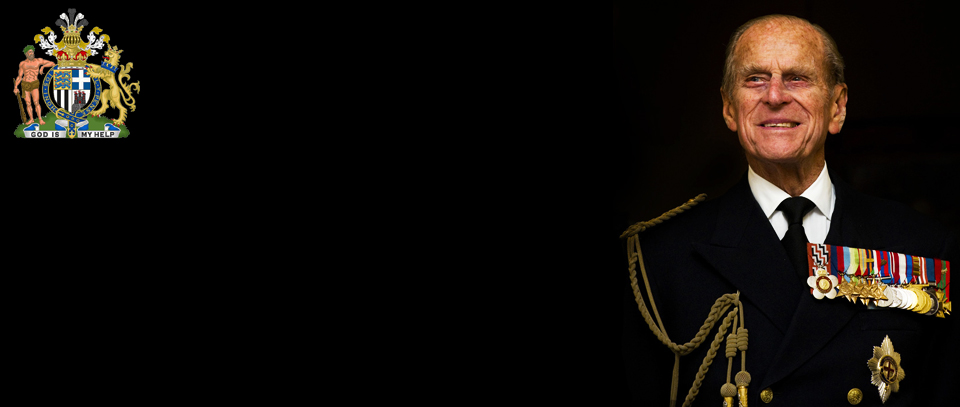
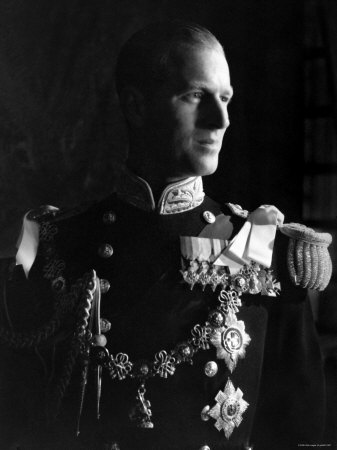
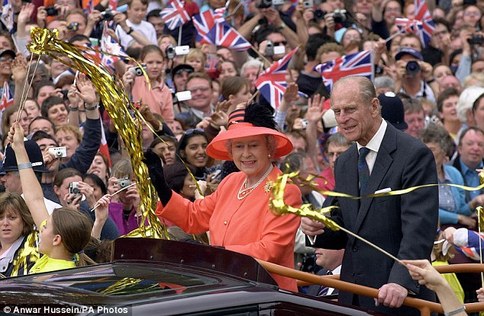
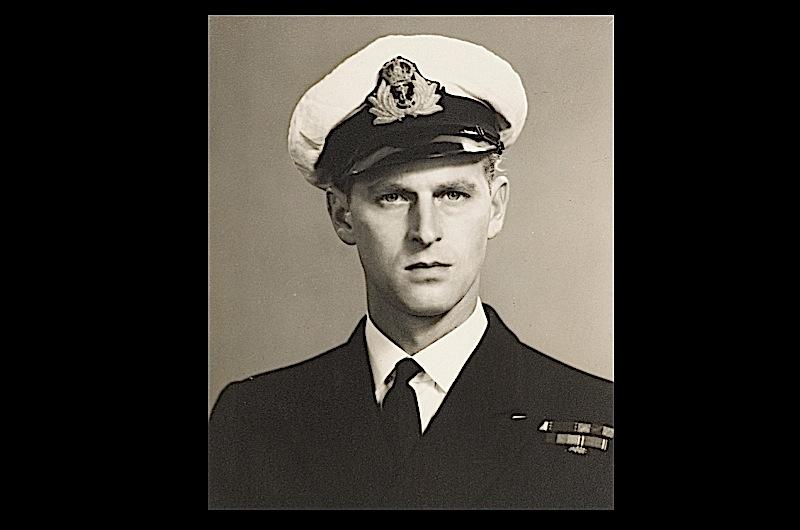
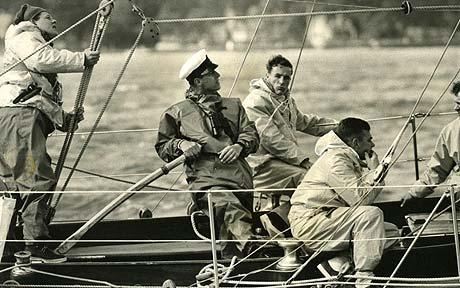
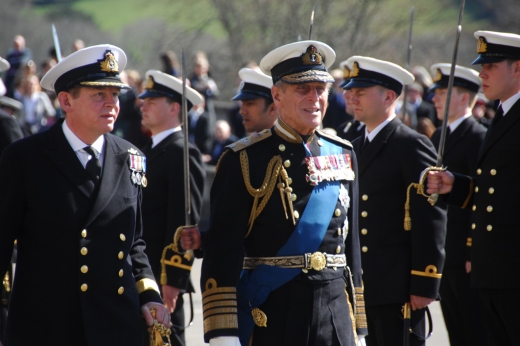
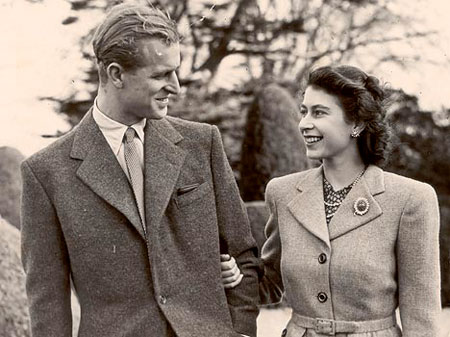
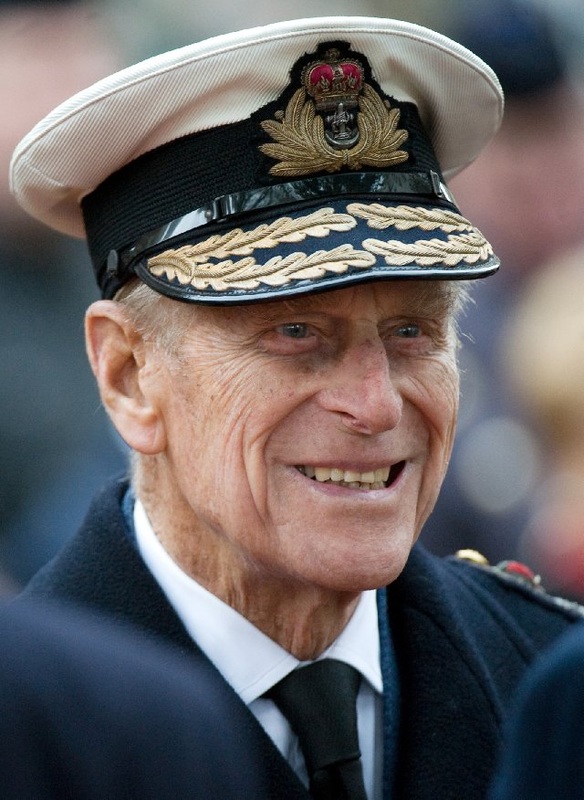
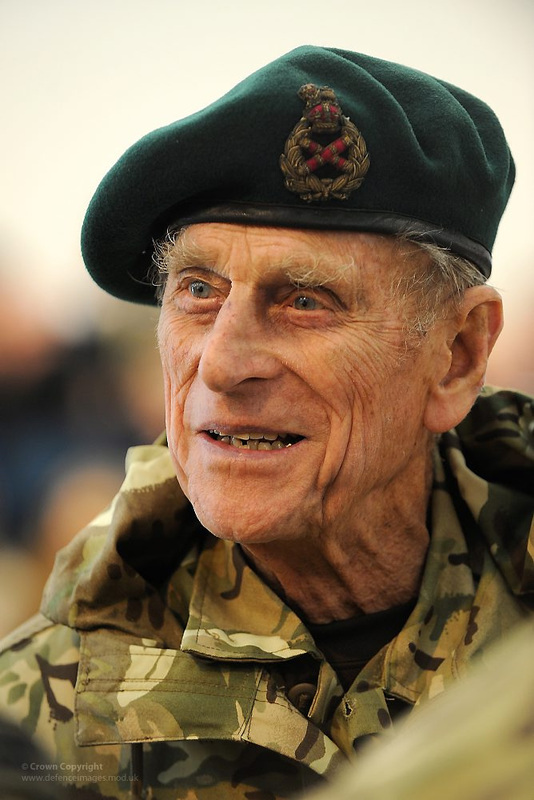
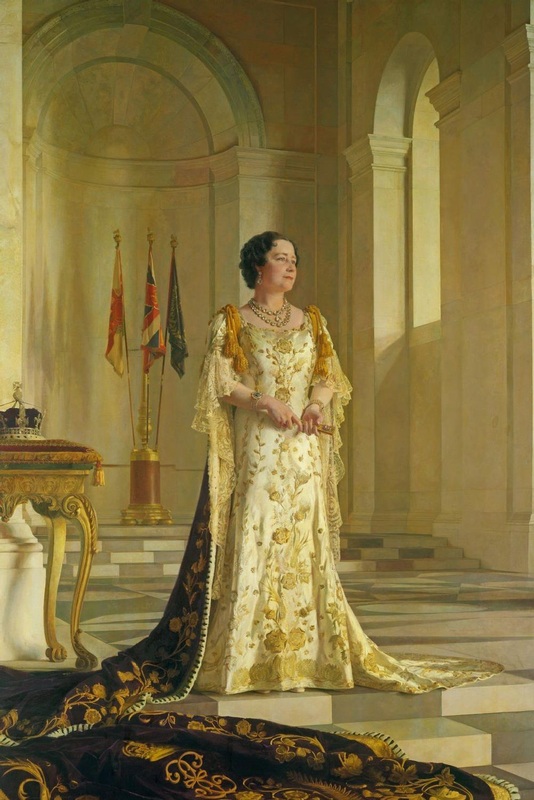
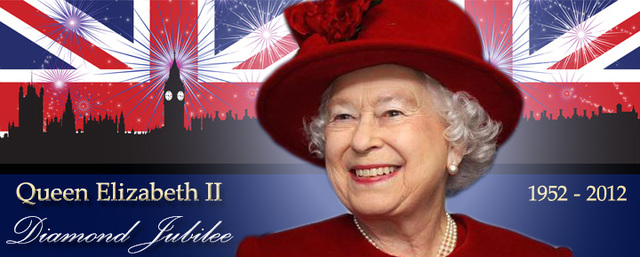
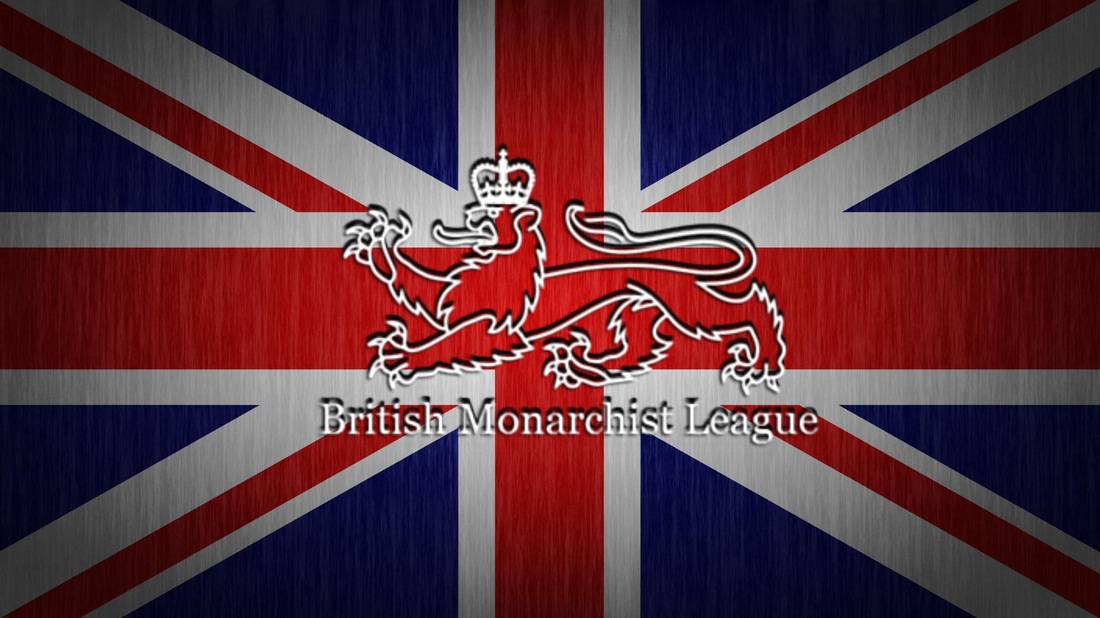
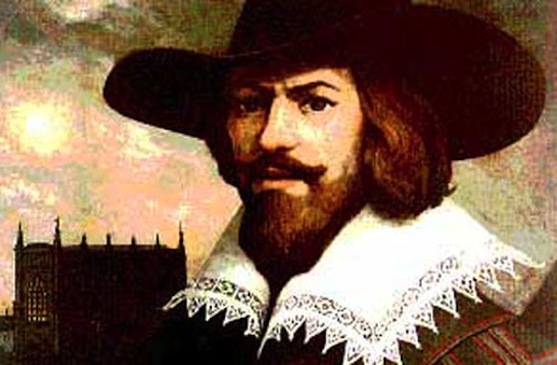
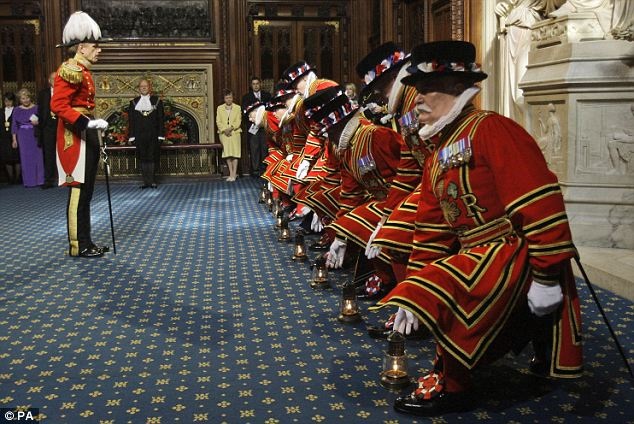
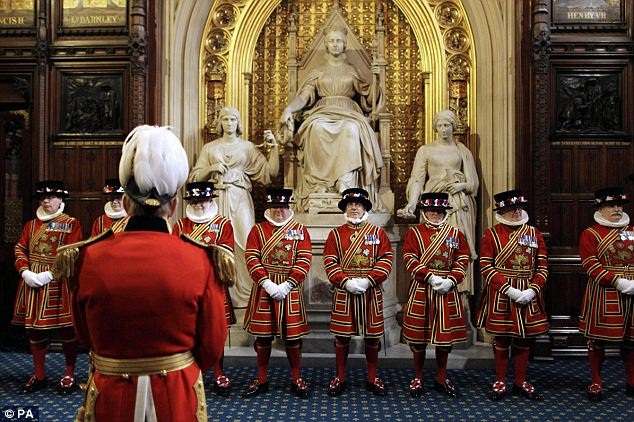
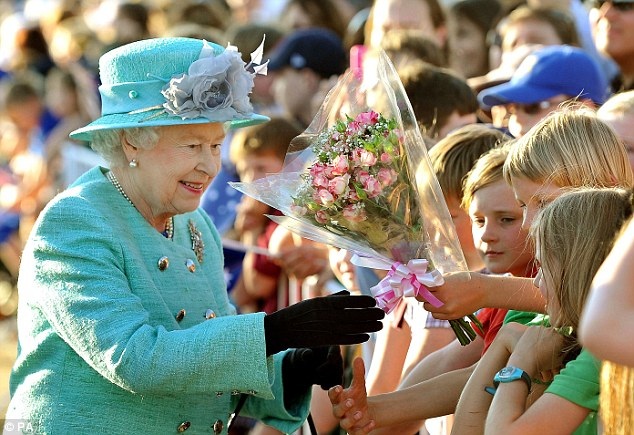
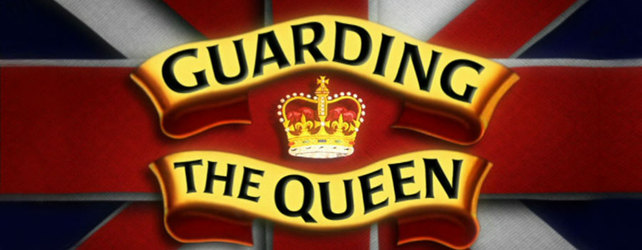
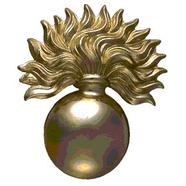
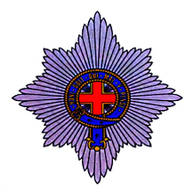
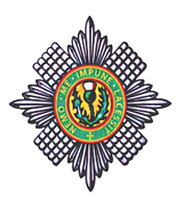
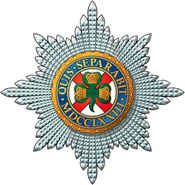
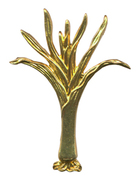

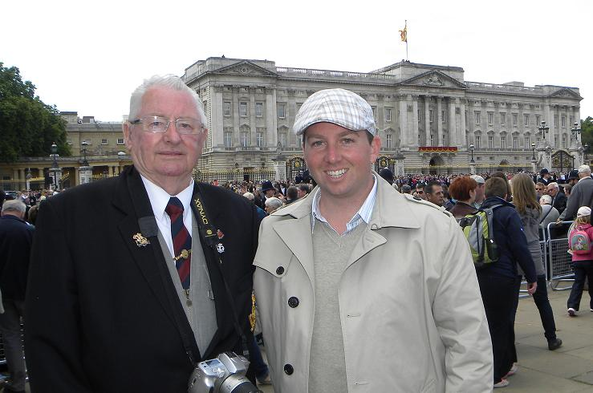
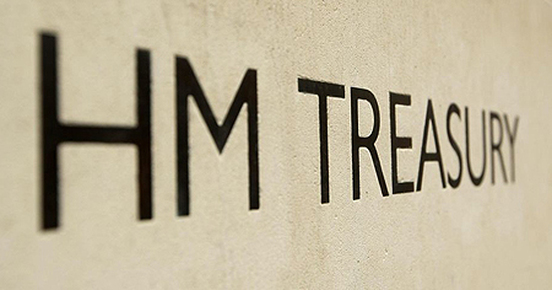
 RSS Feed
RSS Feed